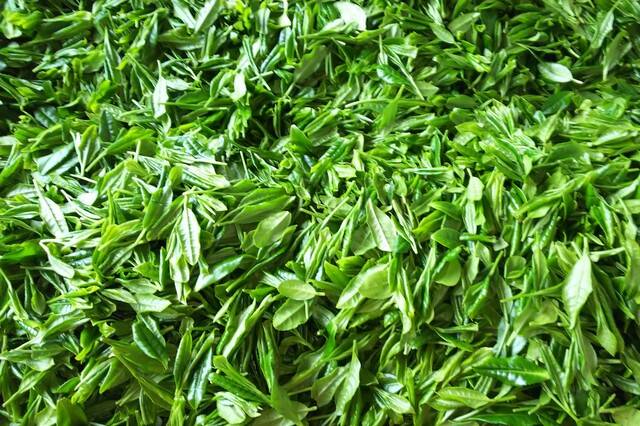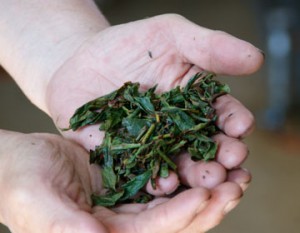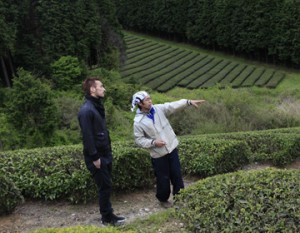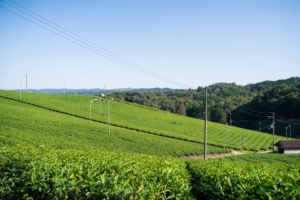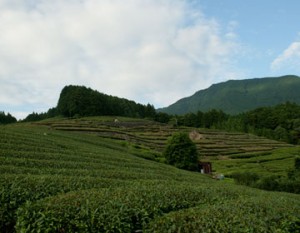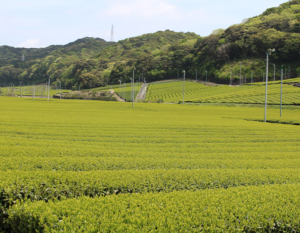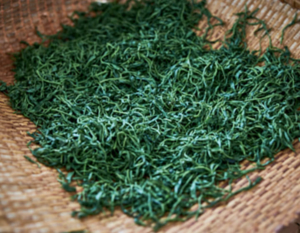High-grade “Tenryu-cha” produced by nature
There is a brand of green tea associated with each region in Shizuoka, the prefecture known as a center of green tea in Japan. The areas by the ocean are warm whereas the mountainous areas are known for the difference in temperatures. There are more than 20 different production areas based on climate, cultivation and processing, and varieties of tea. Most well-known are the three top brands “Honyama-cha”, “Kawane-cha” and “Kakegawa-cha”, and the supreme brand “Tenryu-cha”.
Tenryu-cha is considered to the highest quality brand and is grown in the mountainous area along the Atago River. Most of the tea is only lightly steamed “futsu sencha”, with a beautiful clear color, deep fragrant aroma, and light flavor. Atago River is one of the select 100 water sources in Japan, and has a clarity that surprised even Nakata.
We visited Kaneta Otaen which cultivates Tenryu-cha and is known as one of the top tea makers in Shizuoka. The tea farm is located at quite a high altitude, suitable for growing tea, and care is given to nurture the soil using home grown fertilizer.
“Only a small batch of Tenryu-cha can be cultivated, but it has a distinct flavor and aroma that is pleasant. The tea can be enjoyed even in the fall because the flavor doesn’t dissipate. The air quality is clean, even at this high altitude. Some say that the temperature difference is important, but we place value on the soil. We sometimes spend 7 to 8 years to create the ideal soil.” (Masataka Ota, Kaneta Otaen)
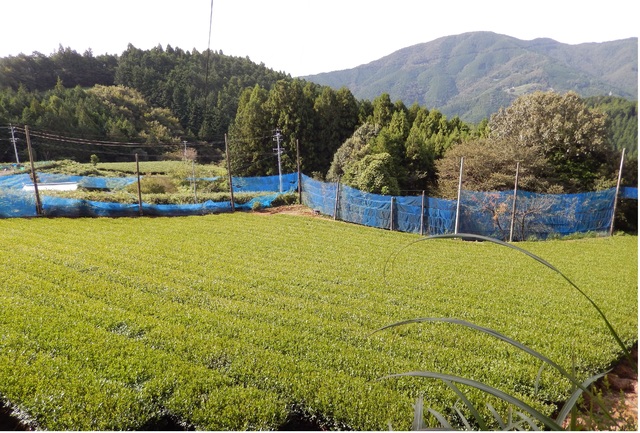
Award-winning master tea maker
Masataka is known for his tea production skills not only in Shizuoka but around the nation. He has received countless awards and at the 2008 G-8 Summit in Toyako, his “Tenryu-cha” was served to the participating leaders. The recipient of awards from the government as well as the Emperor, Masataka is past 80 yet he moves around in the hilly tea fields like a young man.
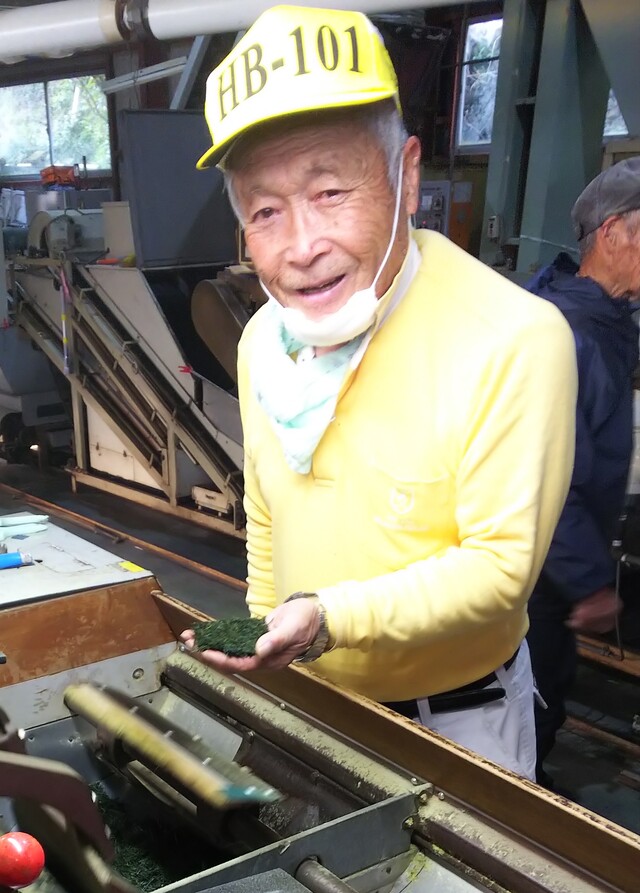
Passion for Tea Making
“The soil on the hill side and ravine side are different with fields located on a hill. It’s important to pick the leaves carefully by hand without using machines. Even the same variety of tea will taste different according to the field and soil. That’s why we grow about 13 to 14 varieties according to the field.”
Most tea farms only sell their tea leaves to a vendor or market. Masataka processes and sells the tea directly. A small amount of tea leaves is placed on a small container and a small amount of hot water is poured over it. The tea is not green but rather golden in color. The aroma and flavor reach deep into the back of your throat with just a small sip. Yet, it’s not a strong flavor but a gentle one that seems to sink slowly into your body.
“The flavor is very bountiful. There is a lot of umami.” (Nakata)
“It’s very pleasing to be told that the tea is delicious. I’ve continued my work because I want people to know the true flavor of tea. That’s why I minimize the roasting process.” (Masataka Ota)
The reason his tea is so delicious is because “the aroma of the morning sun and the fields remains”. His fields did seem to have a clear quality to their scent.
